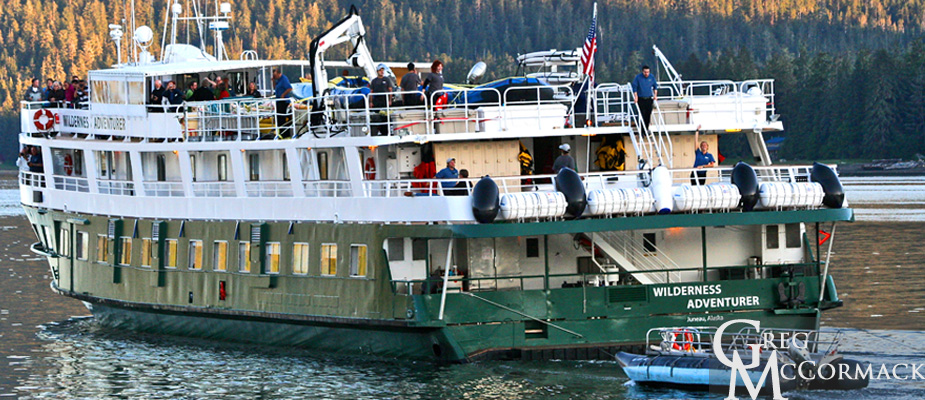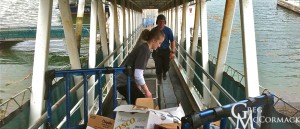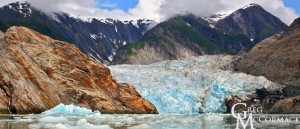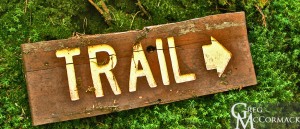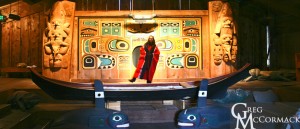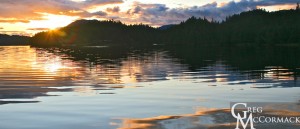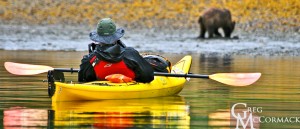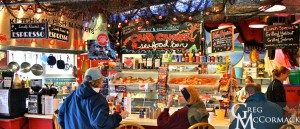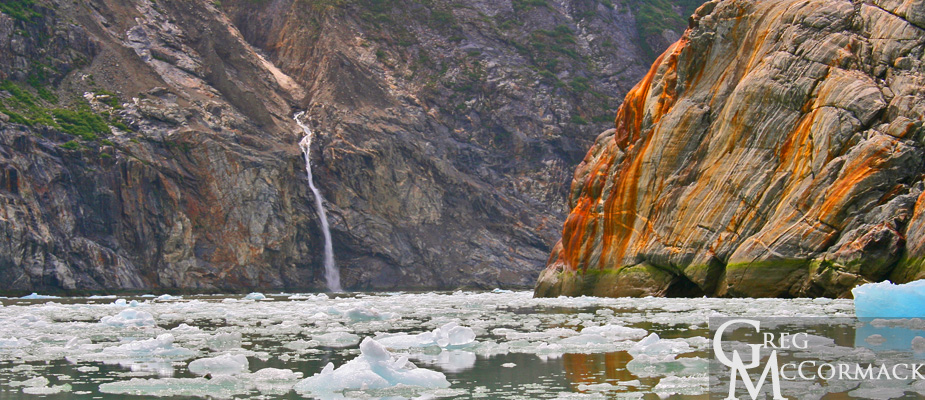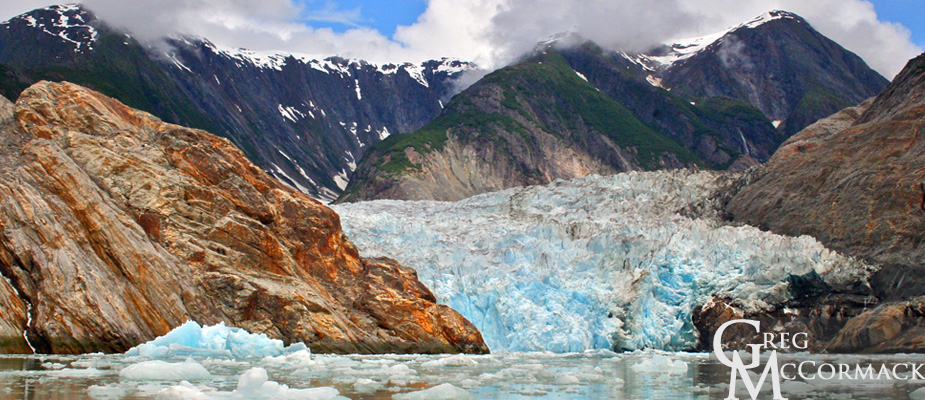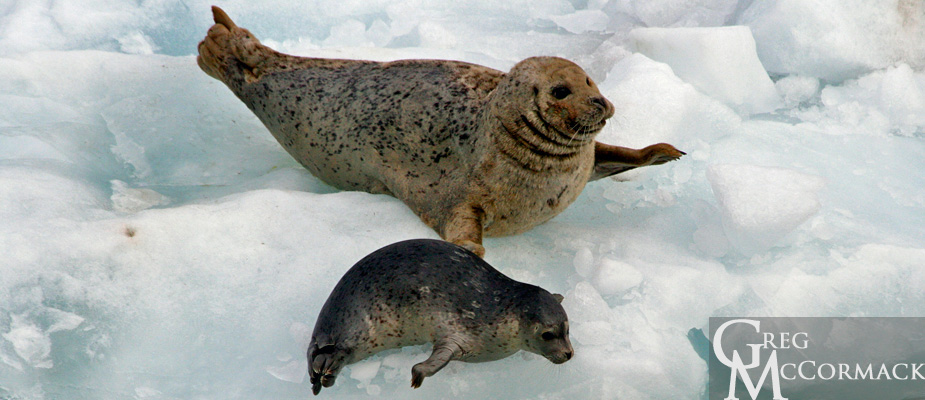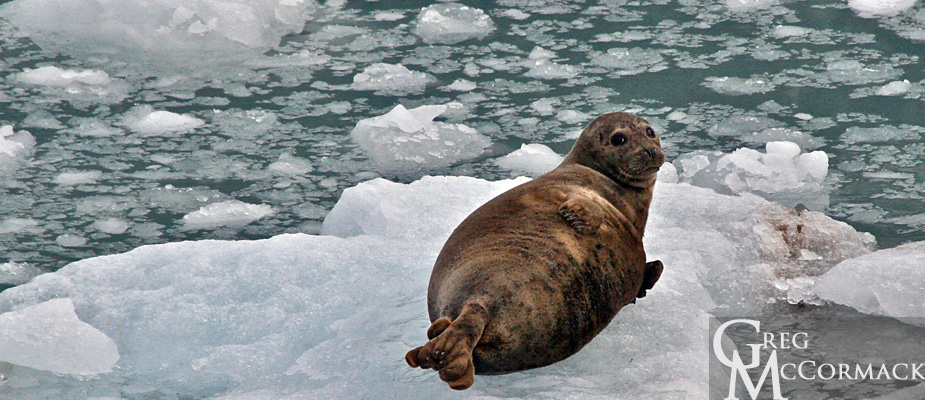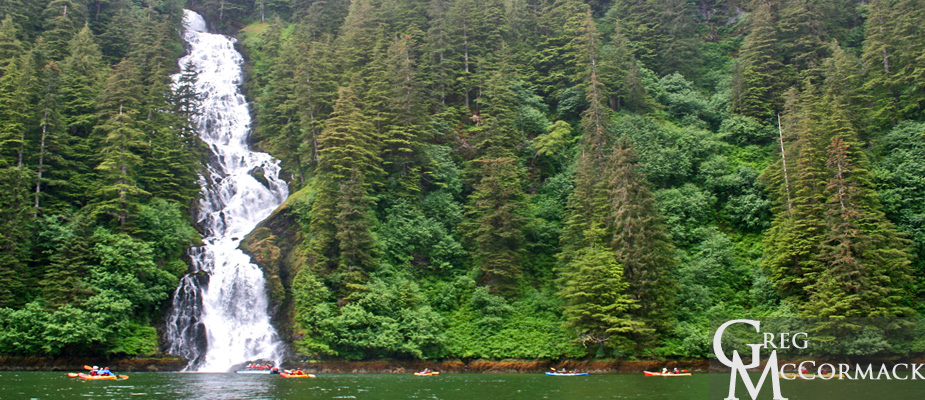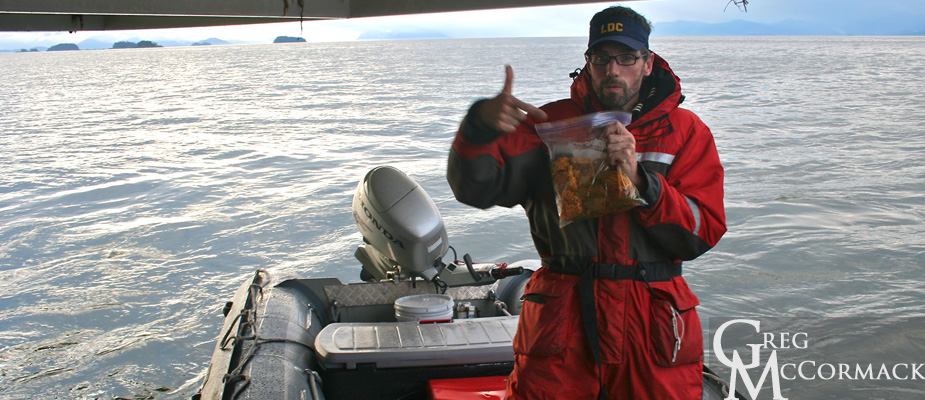Search results
Wednesday | July 13
September 26, 2011 by admin
Filed under InnerSea Discoveries
Ideal Cove, Frederick Sound
“Live each day as you would climb a mountain. An occasional glance towards the summit puts the goal in mind. Many beautiful scenes can be observed from each new vantage point. Climb steadily. Slowly, enjoy each passing moment, and the view from the summit will serve as a fitting climax to the journey.” –Joe Porcino
We awake to another hot and sunny day. We are anchored at the mouth of the mighty Stikine River, the longest fast-flowing, un-dammed navigable river in North America. One can motor upstream 170 river-miles to Telegraph Creek.
The glacier and snow-clad Coast Range is stunning in the morning sunshine. I lead a group of kayakers into Ideal Cove adjacent to the 17-mile wide Stikine River delta. Ice-bergs that discharged out of the fiord from the Le Conte Glacier are a brilliant blue against the coniferous-green backdrop of the rainforest.
Port Houghton lies just east of Frederick Sound and the Five Fingers Lighthouse. We go in for sunset and anchorage in Sanborn Arm.
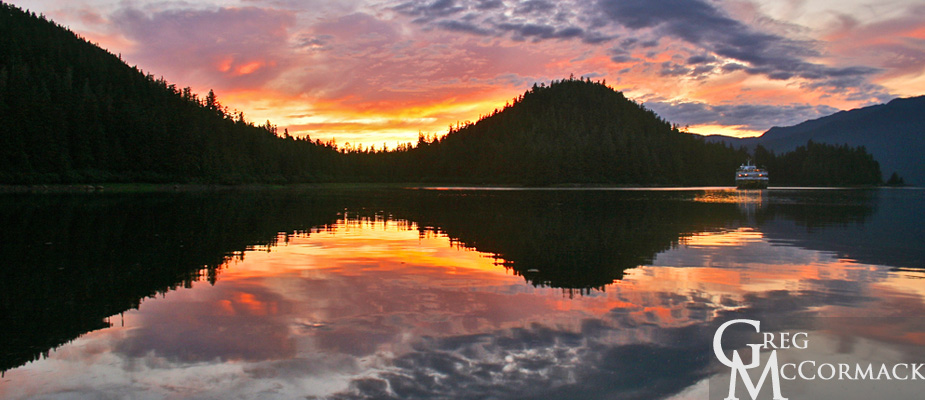
I take a scout boat up Port Houghton Inlet to investigate landings for tomorrows’ hikes. The lighting is ineffable, scintillating and bordering on phantasmagorical. Cloudscapes, landscapes and seascapes are ever-changing and stimulate the brain.
The centuries-old trees in the old-growth forests tower high above the estuarine channel. We spot 100’s of salmon leaping out of the water in anticipation of the spawning to take place in natal streams.
The colorful clouds at sunset are reflected in the still waters. Moments like these are so precious.
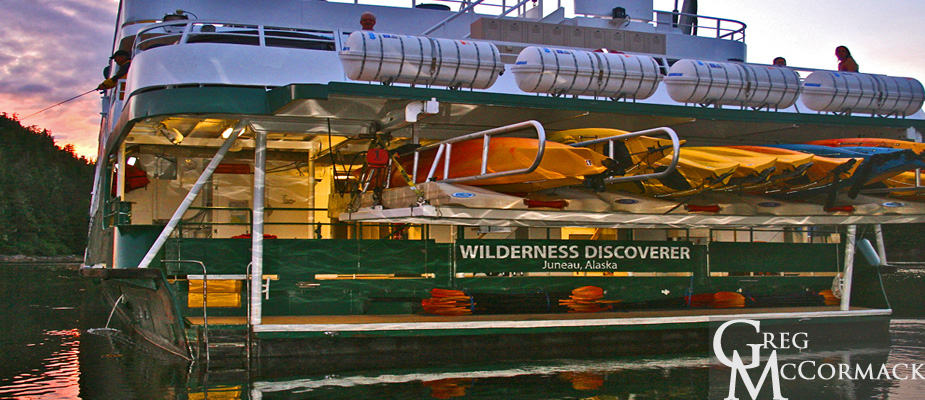
Nature can reveal truths to those that have an open mind and heart. Of course, being in the right place at the right time helps.
Thanks to Captain Marce for choosing to bring us here!
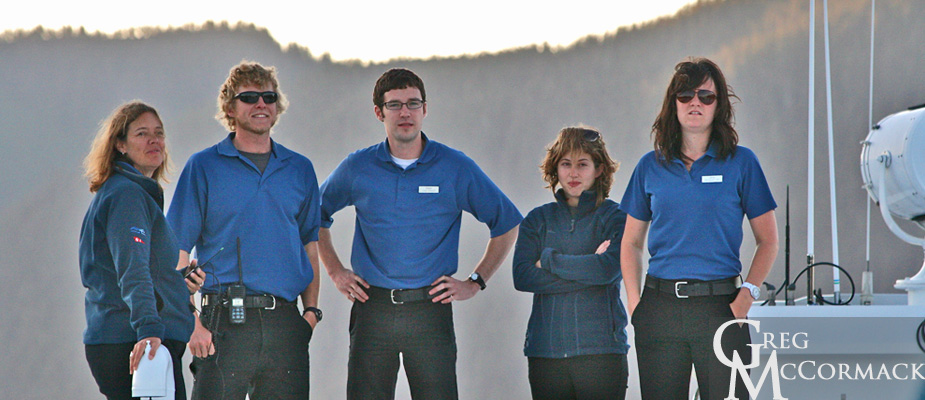
where is gmack now? innersea discoveries expedition week 10
It has been an exciting week on the InnerSea Discoveries Expedition Click Links Below to read daily updates from Week 10 of the Trip:
July 2 – July 9, 2011
Saturday | July 2
TURNOVER DAY = SWABBING THE DECKS
Sunday | July 3
GLACIER CALVING, SEALS & WHALES
Monday | July 4
HAPPY 4TH OF JULY, EVERYBODY!
Tuesday | July 5
MOOSE PELLETS
Wednesday | July 6
CHIEF SHAKES LODGE
SNORKELING AND BANJO PLAYING
Friday | July 8
CLAM-EATING BEAR
Saturday | July 9
“WE NEED THE GREGgle APP!”
Sunday | July 3rd
September 14, 2011 by admin
Filed under InnerSea Discoveries
“Never before this had I been embosomed in scenery so hopelessly beyond description. Tracing shining ways through fjord and sound, past forests and waterfall, islands and mountains and far azure headlands, it seems as if surely we must at length have reached the very paradise of the poets, the abode of the blessed.” –John Muir
At 06:00 the anchor is lifted and the Wilderness Discoverer begins its journey up the 30-mile long Tracy Arm fiord. I like to tell folks that we are all taking a trip back 15,000 years to the Pleistocene Epoch to see what much of the northern latitudes on Earth were like at the southernmost extent of the Wisconsin era glaciation. Basically a person could strap on some skis and continue on ice from Tracy Arm south to present-day Olympia, Washington and head then head east to Cape Cod, Massachusetts.
Tracy Arm—Fords Terror was designated a wilderness area in 1980 with President Jimmy Carter’s passage of the Alaska National Interest Lands Conservation Act (ANILCA). Prior to this it had been designated a National Forest Scenic Area in 1960 and 10 years later a Wilderness Study Area in recognition of the opportunities for solitude and its dramatic beauty.
It was President Lyndon Johnson that signed the Wilderness Act in September of 1964.
It states:
“In order to assure that an increasing population, accompanied by expanding settlement and growing mechanization, does not occupy and modify all areas within the United States and its possessions, leaving no lands designated for preservation and protection in their natural condition, it is hereby declared to be the policy of the Congress to secure for the American people of present and future generations the benefits of an enduring resource of wilderness.”
Everybody seems to appreciate being a visitor to this wilderness as they are out on decks to soak-in the scenery, admire ice-bers and to look for wildlife.
We offer small boat tours. Adventure-seekers enjoy close-up views of the Sawyer Glacier calving ice and the dramatic mountain scenery. I point out the waterfall, located 1.5 miles away from the face of the Sawyer Glacier. When I first started leading folks here in the early to mid-90’s, the glacier was close to this cataract.
People are amazed to see how far it has receded and how much thinning of the glacier has taken place. The barren rock and trim-line of vegetation high up above the recently de-glaciated rubble landscape are reminders of a changing climate.
Harbor seals are spotted on the ice “growlers” or brash ice. Some are seen with pups that were recently born. It takes 6-weeks before pups are weaned off of the mothers milk and are on their own to search for food.
Arctic terns ply the waters, catching schooling fish for their developing young that await in the rock gardens bordering the fiord. Gulls fly back an forth in front of the glacier waiting for the next calving that will churn-up small fish and shrimp for easy-pickings.
Our afternoon and evening is spent looking for and watching whales in Frederick Sound.
Thursday | June 30th
September 10, 2011 by admin
Filed under InnerSea Discoveries
Frederick Sound
Last night we motored into this most stunning of bays on Baranof Island. The majority of guests decide to kayak up the fiord to the splendid waterfall that seems to fall out of the sky down a precipice covered in conifers. Just beyond at the head of the bay on about two hundred acres of mudflats and meadows, a grizzly bear feeds on grasses. Kayakers line themselves along the edge of the river opposite the bear. A bald eagle is perched on a stump, providing another photographic opportunity.
What is the difference between a BROWN bear and a GRIZZLY bear, you may ask? They are the same species, Ursus arctos. The coastal grizzly is called a brown bear. It is significantly larger than the interior grizzly bear because of diet and climate.
Salmon are in abundance along the coast of Alaska. Because the waters of the Gulf of Alaska warm the air enough to moderate the temperatures along the coast, brownies can stay active a couple of months longer than the interior grizzlies. The latter have to deal with temperatures that drop well below freezing, triggering the hibernation response.
We spot a brown bear on the flats and kayak upriver a few hundred meters to get a better look. An eagle perched on a beached stump above the mud-flats was a favorite photo-subject for kayakers.
Later in the day, I get on the marine radio and make a call to the Alaska Whale Foundation. I talk with world-renowned humpback whale researcher Dr. Fred Sharpe. He says that he is available to join us for a talk aboard the ship! We meet him in Frederick Sound and he motors over in his small Zodiac. Fred and I have been friends for over 20 years. He answers lots of questions and entertains guests in the lounge with his humor and knowledge.
After just a half-hour, the swells on this inland sea magically disappear and become glass-like. Humpback whales are spotted “around the clock” in all directions from the ships decks. We estimate at least two dozen whales blowing from just a hundred meters to a couple of kilometers away.
Before disembarking, Fred mentions the influx of nutrients and plankton as a result of the persistent winds we had throughout the morning. Frederick Sound is in the middle of a nutrient-rich geographical area. The plankton feed the schooling fish which in turn feed the leviathans.


